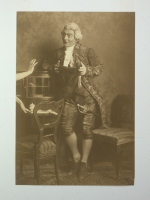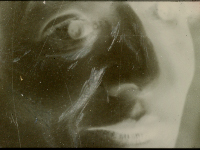Conservation of Original Photographies and Glass Negatives by the Studio d’Ora Benda
|
Studio d’Ora-Benda, Portrait photography
The treatment of the photographies of the Studio d’Ora-Benda is exemplary for other projects during which the work of the librarian goes hand in hand with the work of the conservator for a particular collection.
The Studio d’Ora, which was founded and directed by Dora Kallmus, is one of the most prominent Austrian photo studios of the first half of the 20th century. Portraits by this studio have influenced our ideas of Arthur Schnitzler, Gustav Klimt or Berta Szeps-Zuckerkandl. Madame d’Ora, as Dora Kallmus called herself after 1907, succeded in abandoning frozen portrait poses and she found more suitable variations for her models. Within the limits of a commercial photo studio Madame d’Ora tried to create images which can exist as independent works of art. The Austrian National Library keeps the largest holding of 2 500 original glass negatives and 80 original photographies by the studio.
The glass negatives were re-housed in acid-free photo envelopes. Broken glass negatives were secured in a card board frame and sandwiched between two new glass plates. All the negatives have been digitized in the Picture Archives in order to minimize the handling of originals. All the photo positives, mostly matte albumin papers and matte silver gelatine papers, have been conserved and mounted in mats. The treatment consisted in closing tears, filling losses and flattening cockling.
In a project with the photographer Gabriele Schatzl research was undertaken to understand the correlation between the technique of capture, retouchings on the negative and the choice of the paper. The results show that the style of the studio comprised all work processes. Capture, retouchings and prints were closely co-ordinated. The material and the artistic intention need to be considered as a unity. |



